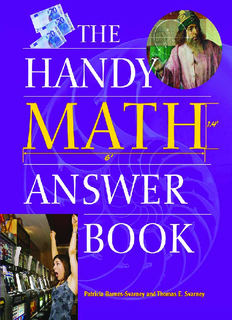The Mind's Maze: A Journey through Thinking, Fast and Slow by Daniel Kahneman
Introduction:
In the intricate dance of decision-making, our minds operate on two distinct tracks – the swift and intuitive, and the deliberate and analytical. In the groundbreaking book, "Thinking, Fast and Slow," Nobel laureate Daniel Kahneman takes us on an enthralling journey through the realms of behavioral economics, unraveling the intricacies of our thought processes and their profound impact on financial decision-making. Join me as we delve into the pages of this intellectual masterpiece, exploring the interplay between the fast and slow modes of thinking and how it shapes our financial choices.
The Dual System: Thinking, Fast and Slow
At the heart of Kahneman's exploration is the concept of two systems that govern our thinking – System 1 and System 2. System 1 operates effortlessly and swiftly, relying on intuition and heuristics to make rapid decisions. On the other hand, System 2 is the deliberate, slower-thinking system that engages in careful analysis and rational decision-making. As we navigate the financial landscape, these two systems often collide, leading to biases, errors, and intriguing insights.
Anchors and Adjustments in Financial Decisions
One of the captivating concepts introduced in "Thinking, Fast and Slow" is the anchoring effect – the tendency of our minds to rely heavily on the first piece of information encountered (the anchor) when making subsequent decisions. In financial contexts, this can lead to skewed perceptions of value. For instance, when considering an investment, the initial stock price becomes a powerful anchor, influencing our subsequent evaluations and decisions.
Kahneman prompts us to recognize the power of anchors and advocates for a deliberate, slow-thinking approach to critically evaluate the information at hand. By consciously adjusting our anchors and considering a broader range of possibilities, we can enhance the quality of our financial decisions.
Prospect Theory and the Psychology of Gains and Losses
"Thinking, Fast and Slow" delves into the intricate landscape of prospect theory, reshaping our understanding of how individuals perceive gains and losses. The book challenges the traditional economic assumption that individuals are rational and utility-maximizing. Instead, Kahneman introduces the concept of loss aversion, asserting that the pain of losses is felt more intensely than the pleasure derived from equivalent gains.
This psychological nuance has profound implications for financial decision-making. Investors may become risk-averse when faced with potential losses, leading to suboptimal choices. By recognizing the asymmetry in our emotional responses to gains and losses, we can cultivate a more balanced and rational approach to financial risk.
Overcoming Overconfidence: A Humble Exploration
"Thinking, Fast and Slow" dissects the pervasive phenomenon of overconfidence, a cognitive bias that often skews our perceptions of our own abilities and the accuracy of our predictions. In the realm of finance, overconfidence can lead to excessive trading, unwarranted risk-taking, and suboptimal investment decisions.
Kahneman's work prompts us to adopt a slow-thinking mindset, encouraging humility in our financial assessments. By critically evaluating our level of confidence and acknowledging the inherent uncertainty in the markets, we can make more informed and measured financial decisions.
The Power of Behavioral Economics in Policy and Finance
Beyond individual decision-making, "Thinking, Fast and Slow" has profound implications for policy design and the functioning of financial markets. Kahneman's exploration of the psychology of human decision-making challenges traditional economic models that assume rational actors. The book advocates for a more realistic understanding of human behavior, paving the way for the integration of behavioral economics into policymaking and financial regulation.
Nudges and Choice Architecture: Guiding Financial Decisions
In the later sections of the book, Kahneman introduces the concept of nudges and choice architecture – subtle changes in the way choices are presented to influence decision-making. These concepts have gained prominence in the realm of behavioral economics and have practical applications in shaping financial choices.
For instance, the way investment options are presented to individuals can significantly impact their choices. By understanding the principles of nudges and incorporating them into financial planning, individuals and institutions can guide decisions in a way that aligns with desired outcomes, without imposing mandates.
The Role of System 2 in Financial Education
"Thinking, Fast and Slow" emphasizes the crucial role of System 2 thinking in combating the biases and errors inherent in our fast-thinking processes. In the context of financial education, this highlights the importance of cultivating a deliberate and analytical mindset.
Educational initiatives that encourage individuals to slow down, critically evaluate information, and recognize cognitive biases can empower them to make more informed financial decisions. By promoting financial literacy that goes beyond mere information dissemination to include strategies for overcoming cognitive pitfalls, we can enhance the efficacy of financial education.
Conclusion: Navigating the Cognitive Maze
As we navigate the cognitive maze unveiled in "Thinking, Fast and Slow," Daniel Kahneman invites us to embrace a nuanced understanding of human decision-making. By acknowledging the interplay between swift intuition and deliberate analysis, we can navigate the complexities of financial choices with greater insight and resilience.
"Thinking, Fast and Slow" is more than a book; it's a journey into the recesses of our minds, a mirror reflecting the intricacies of our decision-making processes. In the world of finance, where uncertainty reigns and choices abound, Kahneman's work serves as a compass, guiding us through the biases, pitfalls, and possibilities that shape our financial destinies.
As we absorb the lessons from this intellectual odyssey, let us approach our financial decisions with a newfound awareness. Let us celebrate the complexity of our minds and embrace the slow-thinking approach that allows us to transcend biases, make informed choices, and cultivate a more prosperous financial future.









